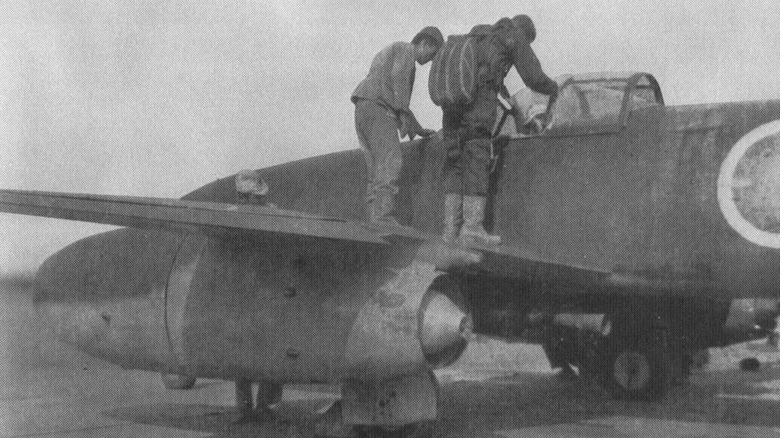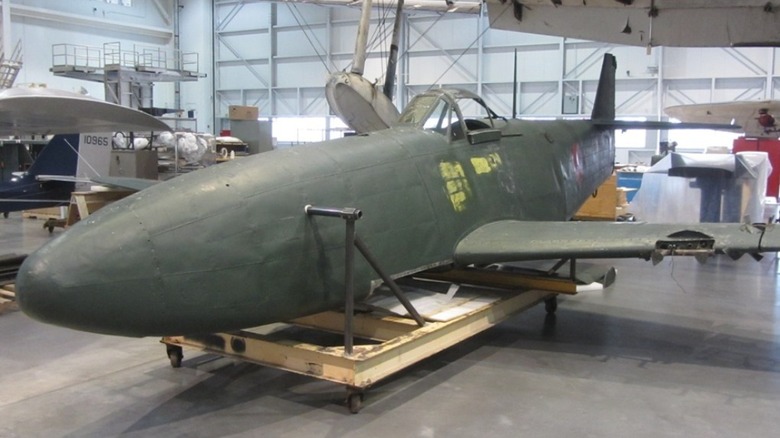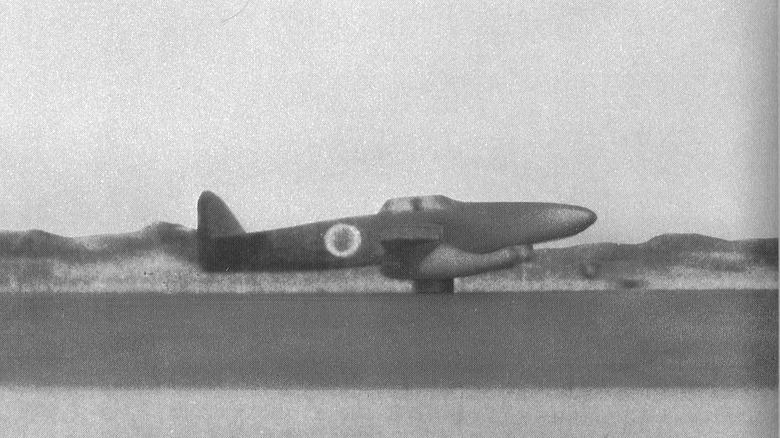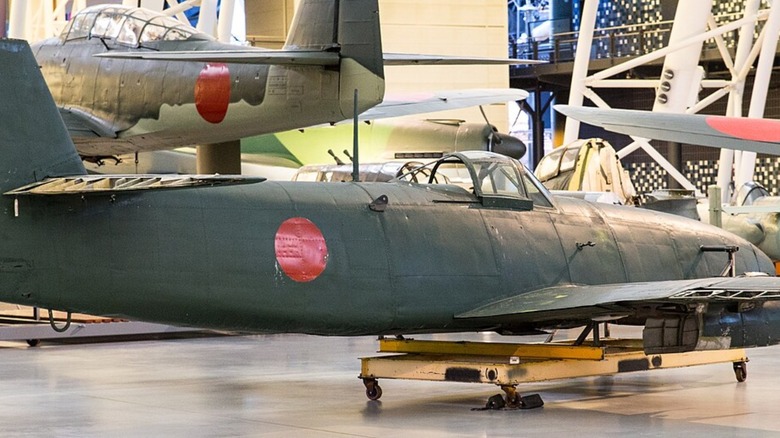Japan's Secret Jet Fighter Of WWII: The Nakajima Kikka
Little more than a year after its destruction of the U.S. fleet at Pearl Harbor, Japan experienced a devastating setback in the Battle of Guadalcanal, which began in August of 1942 and lasted until February of 1943. The combined land and naval fighting ended with the U.S. consolidating its power in the area, and Japan on the back foot for the remainder of its time in the war. Japan's heavy losses of invaluable assets like aircraft carriers weren't sustainable, and the United States would steadily overturn earlier Japanese gains one by one.
But Emperor Hirohito would not surrender until years later, in August 1945. There remained the — albeit unlikely — possibility of shifting momentum back, as there often is in warfare. What Japan needed was a formidable weapon, and engineers were working on just that: the Nakajima Kikka (Orange Blossom) jet.
Though this secret aerial weapon wouldn't save the war for the Japanese, there's no doubt that it was an intimidating prospect (and the Axis Powers certainly had some iconic aircraft in their ranks). If the timing of its development had been different, it could well have been influential. Here's what the Nakajima Kikka could do, how it fared, and the ultimate impact it had on Japan's war effort.
[Featured image by Motokoka via Wikimedia Commons | Cropped and resized | Public Domain]
The development of the Nakajima Kikka
Germany's Me 262 served as the inspiration for the Nakajima Kikka's exterior design. The most important trait it would have in common with the famous Messerschmitt, however, was one that was unique at the time. The Me 262 was the world's first combat jet fighter, and, after Japan's air attaché in Germany watched impressive test flights, it was determined that this was the sort of power source Japan wanted for its secretive new plane.
The project faced some huge hurdles when it began in September of 1944. The first was that, being essentially brand new, jet engines were still a novel prospect that engineers had only recently begun exploring. Japan tried to circumvent this issue with the aid of its German allies, who had shared their expertise by dispatching a package of engines, documents, and other materials dedicated to the emerging science of the turbojet, but the U.S. sank the submarine charged with delivering it across the world.
This left the Japanese with very little guidance to work from beyond a single document that made it to Japan safely. Nonetheless, Japan's Naval Air Technical Arsenal ultimately developed the Ne-20 turbojet. The engine, though experimental, was a bold and creative effort, and would become the driving force of a rather small yet — theoretically, at least — potentially impressive aircraft.
[Featured image by FlugKerl2 via Wikimedia Commons | Cropped and resized | CC BY-SA 3.0]
The specs of the Nakajima Kikka
Because the Nakajima Kikka arrived late in World War II, it's impossible to say how it may have performed if it had been given more flight time and a period of learning and refinement from its creators. Even so, it's still clear from its specifications that the Orange Blossom had a lot of potential.
Two Ne-20 engines would be mounted in the aircraft, which was just short of 27 feet long and had a wingspan just shy of 32 feet, 10 inches. It weighed in at 8,995 pounds. All of this made it rather smaller than the famous Me 262, which measured just short of 40 feet long, boasted a wingspan of almost 41 feet and had a gross weight of 13,250 pounds in its Schwalbe, or Swallow, version.
The Messerschmitt could hit speeds of up to 540 mph, and this is another key difference between the models. The smaller Orange Blossom didn't quite boast the specs of its similarly jet-powered ally, with a top speed of 432 mph and a range of approximately 173 miles depending on the weaponry aboard. This didn't outstrip the U.S. Air Force's aircraft to the same extent, and indeed the legendary P-51 Mustang, which began to be experimentally equipped with Rolls-Royce's Merlin 61 engine early in 1942, could match it.
[Featured image by Motokoka via Wikimedia Commons | Cropped and resized | Public Domain]
The Japanese jet that just wasn't ready to deliver
The Nakajima Kikka would prove to have similar downsides to those that held the Messerschmitt back. The German aircraft suffered from the nation's material shortages and the German command's unwillingness to fully trust the turbojet, ultimately meaning that just 300 of them were used in battle during the war.
Despite its technical superiority, the Me 262 was ultimately tamed by the Allies, who used its exposure when taking off and while on the ground to target it before it could make the best of its big speed advantage. Not only did the slower Nakajima Kikka lack such a major edge, but it also didn't make it past its troubled early trial phase. A prototype model took to the air on Aug. 7 1945, the aircraft's only successful flight before misaligned takeoff assist rockets caused a repeat flight to be canceled abruptly.
Japan surendered on Aug. 15. As U.S. forces advanced across the defeated nation, they entered a Nakajima factory and observed abandoned half-built Kikkas.
This was an innovative model, with straight wings intended to fold away to better conceal it on the ground and the intended versatility of guns and bombs in its arsenal. With the Instrument of Surrender's Sept. 2, 1945 signing aboard the U.S.S. Missouri to come in short order, though, development had come to an abrupt and premature end.
[Featured image by Clemens Vasters via Wikimedia Commons | Cropped and resized | CC BY 2.0]



